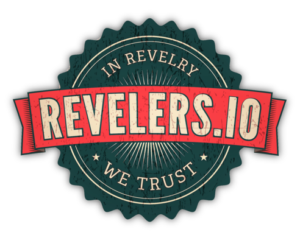Due to a somewhat unexpected crackdown on stem cell treatment centers a couple of weeks ago – we have decided to hold off launching the Stem Cell Investor site that we’ve been promising. And we invested heavily into building the site – now mothballed. This is the second time in seven years (last time 2015)!
What happened is that in 2017, the FDA issued guidance (a mild warning) about their intent to delay enforcement for three years, to let the ‘industry’ get their act together.
Well, that day came 6 months ago. But then the FDA kicked the can another 6 months! When that kicked can came to rest a couple of weeks ago – the FDA came out guns blasting. Not government issued Taser’s – but AR-47s!
It was like the FDA’s version of Elliot Ness in the Untouchables.
400 warning letters went out the same day – saying anyone “illegally marketing
unapproved HCT/Ps, do so at their own risk and may be subject to enforcement action.” And that they had 15 days to comply (nearly impossible) or pull the products/services.
Even Invitrix – William Shatner’s (Captain Kirk) treatment center got a letter to “cease or else.” This is what a warning letter looks like:
Invitrx Therapeutics Inc Warning Letter. All the letters end with:
“We request that you respond in writing within fifteen (15) working days from your receipt of this letter, outlining the specific steps you have taken or plan to take to correct the noted violations and prevent their recurrence.”
Wait, what? Didn’t they read about stem cells saving 12 Corona lives at the University of Miami? Didn’t they read about the Organicell (ORGC) trial in India where ALL the Covid patients recovered, sending the stock up ten-fold in one day? The stuff works, for real. We even got treated ourselves! It’s truly the wonder treatment.
We still are enamored by the industry. The FDA just approved clinical trials for Hope Biosciences for Parkinson’s. So the advancement of stem cell research continues, while at the same time administering stem cell treatments (where we saw investment numerous opportunities) has come to a screeching halt.
While we’ve always been a bit confused in how stem cells themselves can be monetized – we love the idea treatment centers and can easily see billions of revenues being generated administering stem cell treatments. Oh well, for now.
So it’s back to Panama and stem cell tourism on some sunny Caribbean island for now.
We love stem cell treatments and so mixing a treatment with a little R&R sounds quite appealing. Be forewarned though, when we got treated (after we got treated) we were told not to drink for 60 days. So if you’re planning on pounding drinks with little umbrellas, get your drink on – before the treatment.
But for now, it’s best to let the investment dust settle. We will be back.
PSYCHEDELICS
As luck would have it, as one alternative health sector door closed – another opened!
Psilocybin and Ketamine of all things. We’ve been watching the sector commonly referred to as Psychedelics for over a year – sort of interested.
But then the bell rang a couple of weeks ago when Atia (ATIA) – backed by Peter Thiel – filed to raise $100 million through Credit Suisse and Citigroup and ended up raising $225 million!! Meaning the door has swung wide open. There are no revenues of course, so a valuation of near $3 billion for a bunch of people in lab coats means Wall Street interest is saying “show me more ideas.” Which will be pleased to do!
That’s it. $225 Million Raised by Atai (ATAI) Gets us Interested in the Psychedelics Sector.
The New York Times says a Psychedelic Revolution Is Coming and we’re going to be part of it! We’ll build a dedicated site – which should take a couple of weeks to build out.
We already have one client and a Universe of about 25 names in the sector – in all price ranges and in all stages of development. Stayed tuned to see what we find.
We’ll leave you with this:
Ronan Levy, Field Trip’s (FTRPF) executive chairman, said the company was hoping to grab a slice of the $240 billion that Americans spend each year on mental health services. “We are riding the forefront of what I think is going to be a significant cultural and business wave,” he said.
Oh yeah…
FDA CRACKDOWN ON STEM CELLS
2016: FDA Wants To Tighten The Screws On Stem Cell Clinics
The pressure has been mounting for the FDA to do more to control the hundreds of providers offering treatments in the US. In 2017, the agency announced updates to the guidelines developed in 2005. The new guidance documents give more concrete explanations for what constitutes a “minimally manipulated” product, describe an exemption for certain products that are extracted from a patient and re-injected in the same surgical procedure, and outline how the FDA intends to enforce its regulatory framework.
Those rules didn’t go into effect right away. Companies had until May 31, 2021 to align their products with FDA recommendations. The FDA has offered to guide companies that requested help in filing the necessary paperwork and updating protocols.
At the same time, the FDA has vowed to crack down on those companies conducting the riskiest procedures or making unproven claims in their marketing materials, which were already considered against the existing rules. For the most part, this crackdown consisted of the FDA sending more than 350 letters informing companies that they were not in compliance with the agency’s standards.
FDA: Advancing the Development of Safe and Effective Regenerative Medicine Products
The period during which the FDA intends to exercise enforcement discretion with respect to the IND and premarket approval requirements for certain HCT/Ps ends on May 31, 2021, and will not be extended further.
Regenerative Medicine Series
Part 1: A Brief History of Regenerative Medicine
Part 2: The FDA Cracks Down On Stem Cell Therapy
Part 3: Moving Forward and Keeping Stem Cell Treatments Safe
Part 4: What if I Want a Stem Cell Treatment?
Niche Stem News: Historic spring storm of FDA letters to stem cell clinic industry
Opinion from C. Randal Mills , California Institute for Regenerative Medicine, CEO.
We aren’t happy, as a lot of people aren’t happy, with the proliferation of these stem cell clinics — some of which are probably doing good work. But some are clearly making rather outlandish claims for which there’s no real data.
There are a couple of conditions coming together to create this storm.
One is that the need is very real. These patients are really struggling. They don’t have alternatives. They’re desperate and they need help. It’s not in the realm of possibility to talk to somebody who is suffering as badly as these patients are and to say, ‘You have to wait a few more decades for the science to catch up.’
On the other hand, we have a regulatory paradigm that only provides two pathways to put a cell therapy onto the market. One pathway is the most intense regulatory requirement anywhere in the world for any product — the biologics license application through the FDA, which takes 10 to 20 years and costs over $1 billion.
The other is through the exemptions the FDA has made, which require absolutely no pre-market approval whatsoever. You can be on the market in days, with no data.
The regulatory burden associated with one is massive and the other is almost nonexistent.
So it’s not at all surprising that we’re seeing a proliferation of these stem cell clinics popping up that are operating under the assumption that they fall under the exemption.
What the FDA is doing now is saying, ‘We’re not happy with this. We’re going to define some terms more narrowly than in the past … and make it more difficult to legally be on the market under the less burdensome regulatory pathway.’
That’s what this meeting is about.
The problem with their strategy is twofold. It doesn’t address the patients, or the need side of the equation. And I don’t think it has a chance of actually working because the FDA will acknowledge that they do not have the resources to enforce these types of regulations at the clinic level.
They would have to be essentially regulating the practice of physicians, which is well beyond their capabilities. Even if they were able to enforce it, it would just drive these patients somewhere else.
We’re advocating for the creation of some middle pathway that would bring essentially unregulated therapies into the regulatory fold, but in a manner which could be complied with.
I would rather know these clinics are being regulated and collecting data than have them operating under the radar screen of the FDA. I would like there to be a formal pre-market review of these therapies before they’re put on the market. I would like there to be safety and efficacy data.
I’m going to try hard to get the FDA to see that just plugging this hole won’t make the problem go away.
Thinking that they’re going to strengthen the regulation and that patients are going to be satisfied that there’s absolutely no chance for help is naive.
There isn’t a lot of evidence to suggest these types of procedures are overly risky. It’s not that they don’t have risk, but everything in medicine does. If you’re a patient who has absolutely no alternative, you’re probably willing to take the chance.












